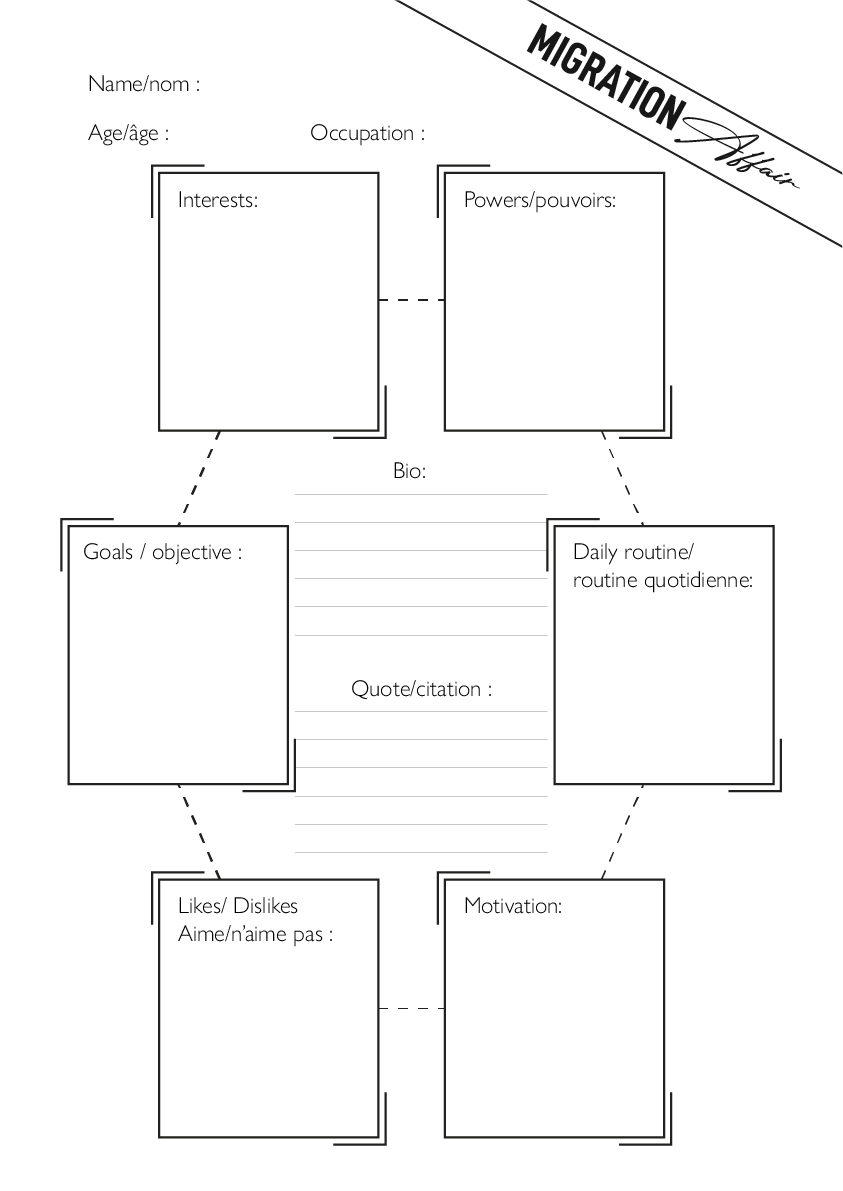
When creating a new activity, knowing your target audience is essential. By narrowing down your audience to a specific profile, you increase your chances of creating real impact. Creating a persona allows you to get in-depth understanding of your audience’s habits, views and attitudes and thus a better understanding on how to influence them.
Creating a persona is a way to visualize and imagine your ‘perfect user’ or ideal target person.
In this article, we’ll explain what personas are, why they’re important, and share some tools to build your own audience personas.
What is a persona?
A persona, or audience persona, is a detailed description of someone who represents your target audience. This is not a real person, but a fictional character who embodies the features of your target audience.
You’ll need to give this person a name, age, profession, interests, and certain behavioral traits like a daily routine. You also need to find out this person’s likes/dislikes, life goals, motivations (e.g. to migrate) and motto (way of life).
It helps to add a picture (grab a picture from stock photography) or draw an illustration of what this “person” looks like. Writing the person’s bio helps you to better understand your character’s background.
The idea here is to think and speak about this “person” as if they were real. This will allow you to craft messages that are specifically to them. Your audience persona will guide everything from activity design, to implementation and communication (even the social channels you’ll use).
How you should use personas
Development projects are complex and often use technical terms that mean little to our target audiences. Audience personas can help avoid that trap by reminding us to think about real humans when preparing a new project.
Audience personas keep you focused on your target audience’s priorities instead of addressing your own.
Does your new activity address the needs and goals of at least one of your audience personas? If not, you have good reasons to reconsider your plan, no matter how exciting it may be. Build your awareness raising strategy based on helping your personas meet their goals, and you’ll build a bond with the real people they represent. It’s all about creating effective projects while creating trust.

How to create an audience persona
1. Define your audience
This is probably the hardest part of project design. Go out in the community and try to understand who the people are you should work with. Which group is most vulnerable to the promises of irregular migration or exploitation? And who are the people influencing their decisions?
In a following post, we’ll address the issue of social networks and how social norms are created. For now, try to narrow down the target group of your activity. There’s no such thing as the general public when it comes to behavioral change activities.
Your audience persona needs to be based on real-life data, it’s not enough to use your instincts. Get a clear idea and accurate data on the people living in your community.
Migration might be a global phenomenon, but it follows different patterns in every community. The only way to find out what’s happening in one place is to talk to people. Understand true motivations, life goals and proposed solutions to reach those.
Once you are done doing your research, define which kind of persons would be the most interesting to engage with. Don’t be afraid of unconventional options and try to avoid the usual suspects.
Just to name some examples of less conventional audience groups: gamers meeting in cyber cafes, sports coaches, hairdressers, bus drivers, members of a youth association, school dropouts, a women’s group organizing small loans, …
2. Use this tool to build your persona
Now that you decided which group you should work with; you should start looking for common characteristics. As you’ll bring them together, you’ll be building the basics of your audience personas.
Let’s say you identified a target group of unmarried, male football players, who live in a small town and like to watch games together in bars. Now it’s time to take this abstract collection of characteristics and to turn them into a persona that you can identify and speak with.
As part of the game Migration Affaire (soon available in the tools section), we created this handy template. Fill out the different sections to start creating your fictional character. You want your persona to feel like a real person.
Not all individuals in your target group will have all the characteristics of your persona. That’s not a problem, as your persona helps you to identify common goals and struggles. If needed, you can also create several personas for one target group.

3. Design your activity based on your persona
From the moment you feel that your persona comes to life, start brainstorming on ways to engage with them.
Create a list of possible activities you feel your persona could be interested in. Test and try these ideas on the persona to see how they address their needs and priorities.
If your idea doesn’t fit the character you created, start over. Try finding an approach that is more adapted to the profile you sketched. Iteration, trial and error are part of the creative process.
You might realize now that holding a film screening debate, in a school building, during the Champions League finals, was probably not the best way of reaching your target group of football fanatics. Instead, you may consider a competitive interaction alongside a screening of a football game in their favorite spot.
Finally
If you still feel unsure about how to use personas in your work, relax. Try to start small by focusing on a single community or problem you’ve come across. Use the tool to experiment with creating characters and see where they may lead you.
Remind yourself to be resourceful. Use the power of your imagination to go from an abstract list of features to a character you can empathize with. If you struggle to do this, look for pictures or inspiration in stories or movies to help you visualize your persona.
In our next posts we’ll explain how to evolve from an individual persona to a social network. This will help you better understand how people interact and create social norms in the process. By making these interactions visible, you can tailor your interventions to these dynamics.
Thank you for reading our post. If you think this was useful, don’t hesitate to share it with colleagues and friends by clicking on the social media button. Dive into our tools and resources sections to learn more about placing people at the center of your activities!